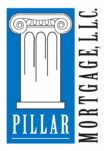Factors that determine mortgage rates?
There are very many factors that determine mortgage rates. There are some that are within your control while some aren’t. By knowing these factors, you will be more confident when looking for the best mortgage rate and choosing the best mortgage lender.
Mortgage rate factors that you can control
The lender will adjust the mortgage rate depending on how risky they think the loan will be. A loan that looks to be riskier will obviously have a higher interest rate.
When weighing the risk, the lender will consider how likely it is for you to fall behind on payments – or even stop making your payment. The key here is to determine how much money the lender could lose just in case the loan goes bad. Some of the main factors are the credit score and loan-to-value ratio.
- Credit score
Borrowers with a credit score of 740 or higher stand a chance of getting the lowest mortgage rates. However, they have the biggest choice when it comes to loan products.
For borrowers with a credit score of 700 to 739 their interest rate will tend to be a bit higher than those with over 740. The interest rate continues to go higher even more for those borrowers with credit scores of 620 to 699 – actually, for this group of borrowers, it might be difficult or even in some cases not possible for them to get a high amount in jumbo loans.
A credit score of below 620, you can be sure to get even higher interest rates and fewer loan options. At this level, most of the loans you can get are those that are guaranteed or insured by the government.
- Loan-to-value ratio
What the loan-to-value ratio does is to measure the mortgage amount in comparison with the home’s value or price. For instance, if you make a $30,000 down payment on a house going for $100,000, the mortgage will be $70,000. In this case you are borrowing 70% of the home value – this means your loan-to-value ratio is 70%.
A smaller down payment gives you a bigger loan-to-value ratio, while a bigger down payment gives you a smaller loan-to-value ratio.
When your loan-to-value ratio is bigger than 80%, it’s then considered to be high, therefore putting the lender at higher risk. This might lead to a higher mortgage rate, especially when you combine that with a low credit score. This mortgage loan will generally need mortgage insurance.
Other factors
The lenders can charge more for adjustable-rate mortgages, cash-out refinances, loans on manufactured houses, second homes, condominiums and investment properties. This is because those loans are considered to be riskier.
Mortgage rate factors that you can’t control
The general level of mortgage rates is set by the market forces. Mortgage rates are continuously moving up and down each day. This is due to the present and expected rates of unemployment, inflation and other economic indicators.
- Inflation
Increasing inflation is mostly followed by rising interest rates, since when prices rise, the dollar loses its buying power. In this situation lenders demand greater interest rates as compensation.
The past 10 years of low inflation lead to low mortgage rates. However, in 2022 when inflation went up drastically, we definitely saw a rise in mortgage rates.
- Overall economy
Mortgage rates have a tendency to rise when the outlook is for rapid economic growth, a low unemployment rate and higher inflation. 0n the other hand mortgage rates have a tendency to drop when the economy is slowing down, unemployment rate is rising and inflation is falling.
- Job growth
The COVID-19 pandemic led to most people having to stay at home from the beginning of 2020, this resulted in layoffs and stay-at-home orders in the spring of 2020, the resulting layoffs caused a massive recession. The already low mortgage rates fell even further – just as we would expect to happen in a recession.
Other economic indicators
Mortgage investors are always on the look for other economic trends other than employment and inflation. Some of them are retail sales, housing starts, home sales, stock prices and corporate earnings.
Federal Reserve
The Federal Reserve isn’t responsible for setting mortgage rates. What happens is that the Fed raises and cuts short-term interest rates in response to broad movements in the economy. Mortgage rates go up and down according to similar economic forces. This is to show that Fed rates and mortgage rates move independently of each other, but generally in the same direction.
Conclusion
Now that lenders’ mortgage rates differ, it’s wise to shop for a mortgage from a well-known and trusted mortgage lender like Pillar Mortgage lenders so as to help you save some dollars.
Pillar Mortgage can and is ready to help you through every step of the entire mortgage process from start to finish. Call us today!

